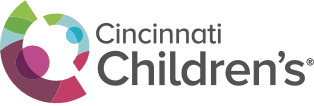How is a Congenital Diaphragmatic Hernia Treated?
Treatments for CDH depend on several factors. These include how well the baby’s lungs work and whether they also have other medical problems.
Some babies begin treatment while they’re still in their mother’s womb. Others don’t need treatment until after birth.
Fetal CDH Surgery
Cincinnati Children’s offers a special type of surgery for babies with moderate to severe CDH. This procedure is called fetoscopic endoluminal tracheal occlusion (FETO). It’s performed in utero (before the baby is born).
During FETO, a fetal surgeon makes a small incision (cut) in the mother’s belly and uterus. The surgeon then guides a flexible, hollow tube (endoscope) inside the uterus and into the baby’s trachea (windpipe). A tiny balloon attached to the endoscope expands and is left inside the trachea for four to six weeks.
Because babies receive oxygen through their mother’s placenta, this balloon doesn’t interfere with the baby’s breathing while in utero. Instead, it blocks a special fluid from leaving the baby’s lungs. It’s thought that when this fluid builds up, it helps boost lung growth.
During the extended FETO treatment, doctors will need to conduct frequent prenatal imaging scans on expectant mothers to monitor the baby’s lung development and overall growth. These will occur every other week once the mother reaches 28 weeks of pregnancy, increasing to weekly scans after week 32.
Once the baby reaches 32-34 weeks of growth, doctors will remove the balloon to allow the baby’s lungs to continue to grow on their own.
Specialized CDH Delivery
Cincinnati Children’s is one of the few hospitals in the country that offer a special type of delivery for babies with severe CDH.
This birthing approach is called “ex utero intrapartum treatment-to-extracorporeal membrane oxygenation,” or EXIT-to-ECMO. It’s a type of cesarean delivery (C-section) where the baby is removed from the womb and then immediately placed on a heart and lung bypass machine called an ECMO.
As an advanced life support system, ECMO takes over the work of the baby’s heart and lungs to keep the baby alive until the baby’s organs stabilize and can work on their own.
Babies with severe CDH (who don’t have FETO) tend to have survival rates between 11-40%. An EXIT-to-ECMO delivery may improve their survival chance to 65%.
After Birth Intensive Care
When babies are born with CDH, a breathing tube is placed right away so that they can receive breathing support through a ventilator (breathing machine) right after birth. Babies with the most severe lung or heart impairments may be placed on ECMO for advanced support until their lungs develop and their breathing stabilizes.
Most babies with CDH need surgery to repair the hole in their diaphragm. This surgery may take place days or weeks after birth, depending on the baby’s overall health.
During the procedure, a surgeon moves the abdominal organs into their proper place. Then they permanently close the hole in the diaphragm.
Some babies with severe CDH may remain on ECMO for several weeks after surgery. This gives their lungs a longer window in which to heal and recover.
All babies who undergo CDH repair surgery can expect to stay in the NICU for recovery for at least 12 weeks.



